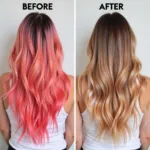A cinematographer’s command of color significantly impacts the mood, narrative, and overall aesthetic of a film. They manipulate color in a scene through a variety of techniques, from pre-production planning to post-production grading, to evoke specific emotions and guide the viewer’s eye.
The Cinematographer’s Color Palette: Tools and Techniques
Color is a powerful storytelling tool. Cinematographers use it to create visual harmony, contrast, and symbolism, adding layers of meaning to the narrative. Understanding how they achieve this control requires exploring their toolkit.
Lighting: The Foundation of Color Control
Light is the very essence of cinematography, and its manipulation is fundamental to color control. Cinematographers carefully select the type of light source (natural, artificial), its intensity, and its color temperature to establish the scene’s mood. Warm light suggests comfort and intimacy, while cool light can create a sense of unease or isolation. They also use color gels to modify the light’s hue, adding another layer of control.
Camera Filters: Fine-Tuning the Hues
Filters placed in front of the camera lens can further refine the colors captured. These filters can subtly enhance specific colors, suppress others, or create special effects. For instance, a warming filter might enrich the golden hues of a sunset, while a polarizing filter reduces glare and deepens blue skies. The choice of filter depends on the desired aesthetic and the story being told.
Lens Choice: Impacting Color Saturation and Contrast
Even the choice of lens can affect color rendition. Different lenses possess unique characteristics that influence color saturation and contrast. Some lenses might produce a warmer, more vibrant image, while others offer a cooler, more clinical look. The cinematographer considers these nuances when selecting lenses to complement the overall color palette of the scene.
Production Design: Color in the Mise-en-scène
Color control extends beyond lighting and camera techniques. The colors of sets, costumes, and props are carefully chosen to contribute to the overall visual narrative. A vibrant red dress might symbolize passion, while a drab gray environment might reflect despair. The cinematographer collaborates with the production designer to ensure that all elements within the frame work harmoniously with the desired color scheme.
 Production Design and Color Palette in Film Scene
Production Design and Color Palette in Film Scene
Post-Production Color Grading: The Final Touch
Digital color grading allows for precise color adjustments in post-production. This process enables the cinematographer to fine-tune the colors of each shot, ensuring consistency and enhancing the desired mood. They can selectively adjust hue, saturation, and brightness to create dramatic effects, subtly shift the emotional tone, or correct any color imbalances captured during filming.
How do Lighting Techniques Impact Color in Film?
Different lighting techniques, such as three-point lighting, high-key lighting, and low-key lighting, drastically affect the color palette and mood of a scene. Three-point lighting creates a balanced and natural look, while high-key lighting emphasizes bright, vibrant colors and a cheerful atmosphere. Conversely, low-key lighting uses shadows and deep blacks to create a moody and dramatic effect.
What are some common color symbolism techniques used in cinematography?
Color symbolism is a powerful tool for conveying emotions and themes without dialogue. For example, blue is often associated with sadness or tranquility, red with passion or danger, and green with envy or nature. Cinematographers strategically employ these associations to enhance the narrative and evoke specific feelings in the audience.
“Color isn’t just about aesthetics; it’s a language. We use it to speak to the audience on a subconscious level, guiding their emotions and understanding of the story.” – Ava Sinclair, Cinematographer.
How Does the Cinematographer Maintain Color Consistency Throughout a Film?
Maintaining color consistency is crucial for a cohesive visual experience. Cinematographers use color charts and light meters to ensure accurate color reproduction from shot to shot. They also work closely with the colorist in post-production to ensure that the final color grade maintains a unified look across the entire film.
“Color consistency is the backbone of a visually compelling film. It creates a seamless world for the audience to immerse themselves in.” – Julian Ramirez, Director of Photography.
Conclusion
Controlling color is a complex and multifaceted process in cinematography, involving careful consideration of lighting, filters, lenses, production design, and post-production grading. By mastering these tools and techniques, cinematographers can effectively manipulate color to enhance storytelling, evoke emotions, and create visually stunning films. How Does The Cinematographer Control Color In A Scene? They use a sophisticated blend of art and technology to paint with light, creating a visual symphony that captivates and moves the audience.
FAQ
-
What is color grading in film?
Color grading is the process of digitally manipulating the colors of a film in post-production. -
What are some common color filters used in cinematography?
Common color filters include warming filters, cooling filters, and polarizing filters. -
How does lighting affect the color of a scene?
Lighting determines the color temperature, intensity, and overall mood of a scene. -
What is color symbolism in film?
Color symbolism is the use of colors to represent specific emotions, themes, or ideas. -
Why is color consistency important in film?
Color consistency creates a unified visual experience and helps immerse the audience in the story. -
What is the role of the cinematographer in controlling color?
The cinematographer is responsible for all visual aspects of a film, including color control. -
How does color contribute to storytelling in film?
Color enhances storytelling by setting the mood, creating visual interest, and conveying symbolism.
Situations Where Color Control Is Crucial
- Creating a specific mood or atmosphere: A horror film might use cool, desaturated colors to evoke fear, while a romantic film might use warm, vibrant colors to evoke love.
- Highlighting specific objects or characters: A splash of bright color in a predominantly monochromatic scene can draw the viewer’s attention to a crucial detail or character.
- Establishing the time period or setting: Color can be used to create a sense of nostalgia for a past era or to transport the viewer to a fantastical world.
Further Exploration
Explore these topics for a deeper understanding of color in cinematography:
- Color theory in film
- The history of color in cinema
- The psychology of color perception
Need help with your color choices? Contact us! Phone: 0373298888, Email: [email protected]. Visit us at 86 Cầu Giấy, Hà Nội. Our customer service team is available 24/7.

